Chemistry > QUESTIONS & ANSWERS > Solutions from Montgomery, D. C. (2017) Design and Analysis of Experiments, Wiley, NY 4-1 Chapter 4 (All)
Solutions from Montgomery, D. C. (2017) Design and Analysis of Experiments, Wiley, NY 4-1 Chapter 4 Randomized Blocks, Latin Squares, and Related Designs Solutions
Document Content and Description Below
Solutions from Montgomery, D. C. (2017) Design and Analysis of Experiments, Wiley, NY 4-1 Chapter 4 Randomized Blocks, Latin Squares, and Related Designs Solutions 4.1. Suppose that a single fact... or experiment with four levels of the factor has been conducted. There are six replicates and the experiment has been conducted in blocks. The error sum of square is 500 and the block sum of the square is 250. If the experiment had been conducted as a completely randomized design the estimate of the error variance would be (a) 25.0 (b) 25.5 (c) 35.0 (d) 37.5 (e) none of the above 4.2. Suppose that a single factor experiment with five levels of the factor has been conducted. There are three replicated and the experiment has been conducted as a complete randomized design. If the experiment had been conducted in blocks the pure error degrees of freedom would be reduced by (a) 3 (b) 5 (c) 2 (d) 4 (e) none of the above 4.3. Blocking is a technique that can be used to control the variability transmitted by uncontrolled nuisance factors in an experiment. True False 4.4. The number of blocks in the RCBD must always equal the number of treatments of factor levels. True False 4.5. The key concept of the phrase “Block if you can, randomize if you can’t.” is that: (a) It is usually better to not randomize within blocks (b) Blocking violates the assumption of constant variance (c) Create blocks by using each level of the nuisance factor as a block and randomize within blocks (d) Randomizing the runs is preferable to randomizing blocksSolutions from Montgomery, D. C. (2017) Design and Analysis of Experiments, Wiley, NY 4-2 4.6. The ANOVA from a randomized complete block experiment output is shown below. Source DF SS MS F P Treatment 4 1010.56 ? 29.84 ? Block ? ? 64.765 ? ? Error 20 169.33 ? Total 29 1503.71 (a) Fill in the blanks. You may give bounds on the P-value. Completed table is: Source DF SS MS F P Treatment 4 1010.56 252.640 29.84 < 0.00001 Block 5 323.82 64.765 Error 20 169.33 8.467 Total 29 1503.71 (b) How many blocks were used in this experiment? Six blocks were used. (c) What conclusions can you draw? The treatment effect is significant; the means of the five treatments are not all equal. 4.7. Consider the single-factor completely randomized experiment shown in Problem 3.8. Suppose that this experiment had been conducted in a randomized complete block design, and that the sum of squares for blocks was 80.00. Modify the ANOVA for this experiment to show the correct analysis for the randomized complete block experiment. The modified ANOVA is shown below: Source DF SS MS F P Treatment 4 987.71 246.93 46.3583 < 0.00001 Block 5 80.00 16.00 Error 20 106.53 5.33 Total 29 1174.24 [Show More]
Last updated: 1 year ago
Preview 1 out of 53 pages
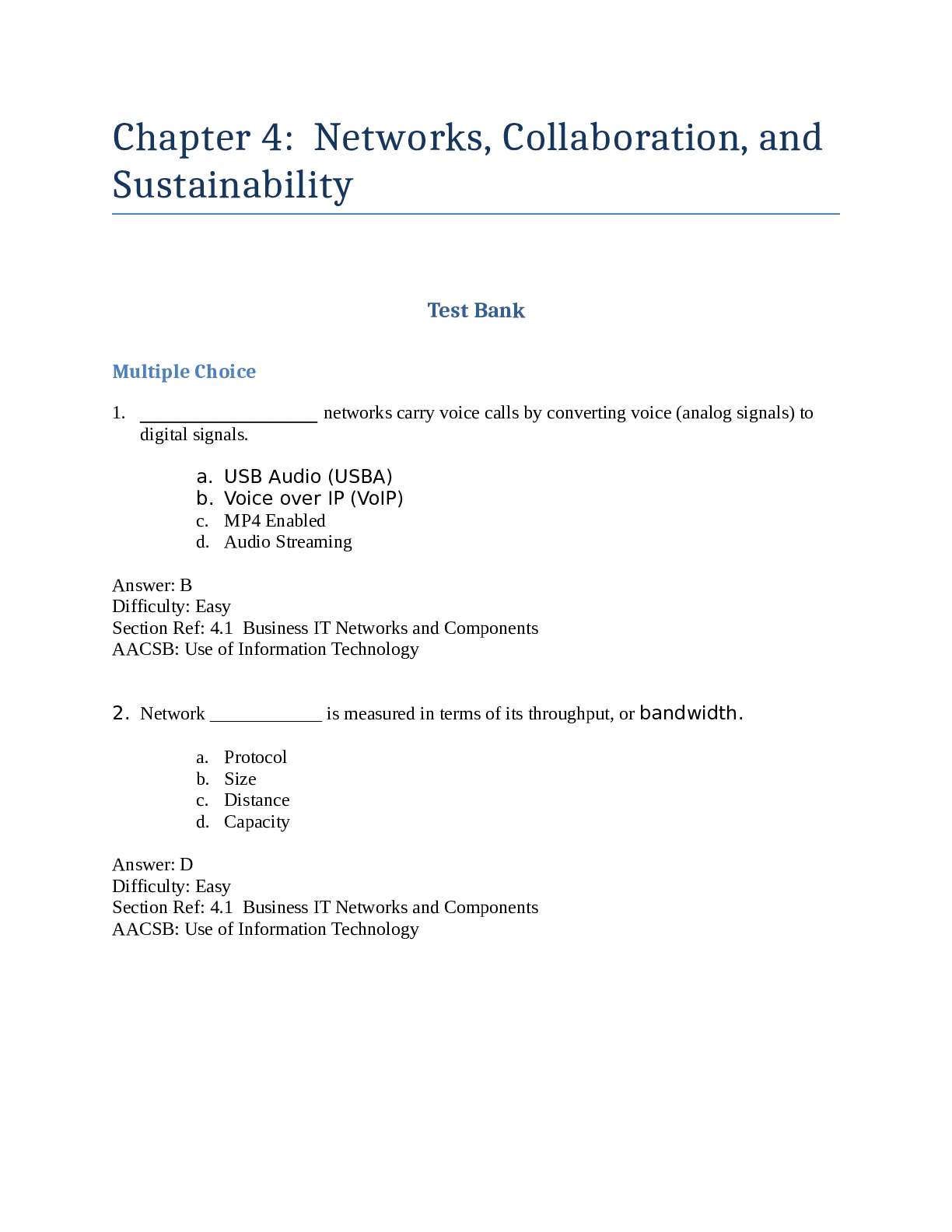
Reviews( 0 )
Document information
Connected school, study & course
About the document
Uploaded On
Jun 11, 2021
Number of pages
53
Written in
Additional information
This document has been written for:
Uploaded
Jun 11, 2021
Downloads
0
Views
35



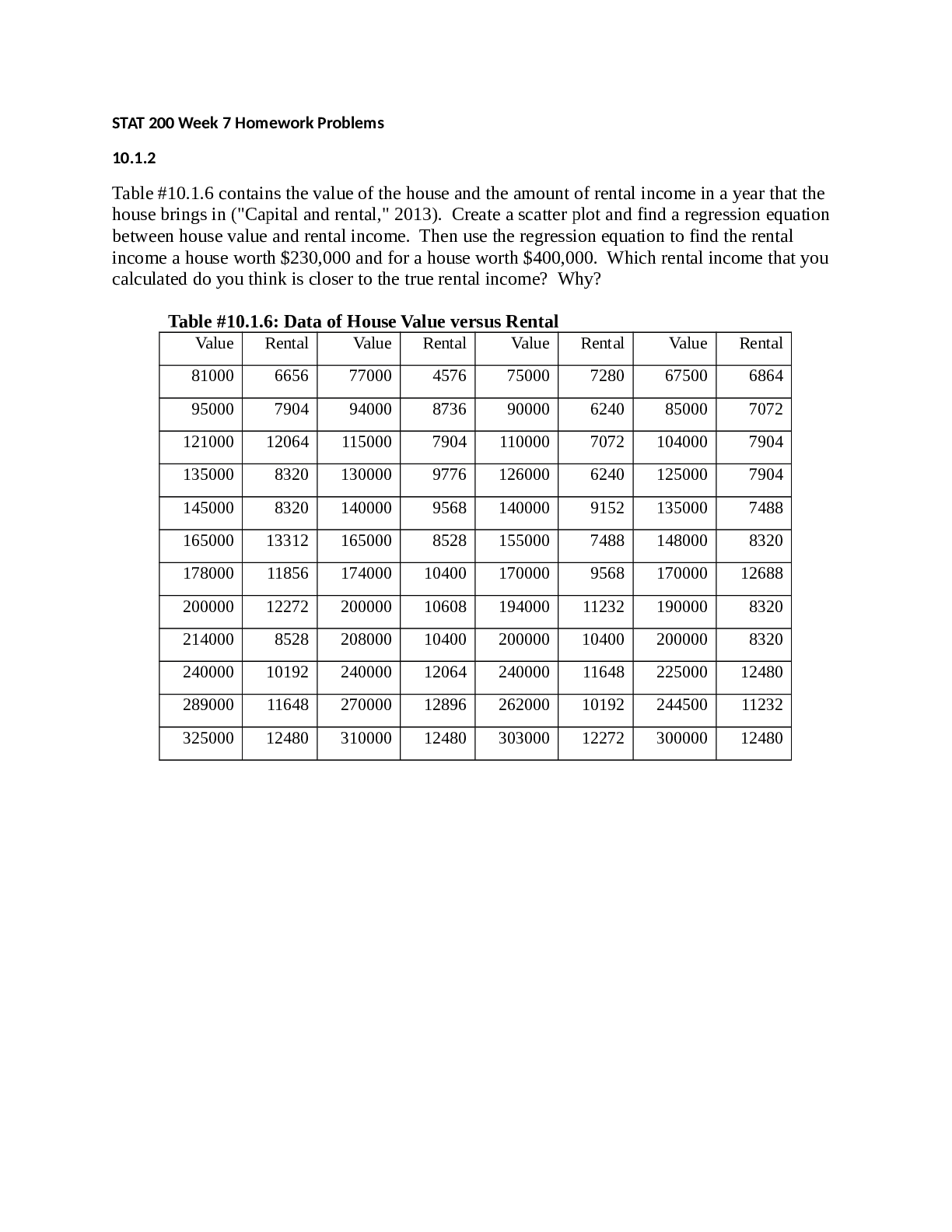


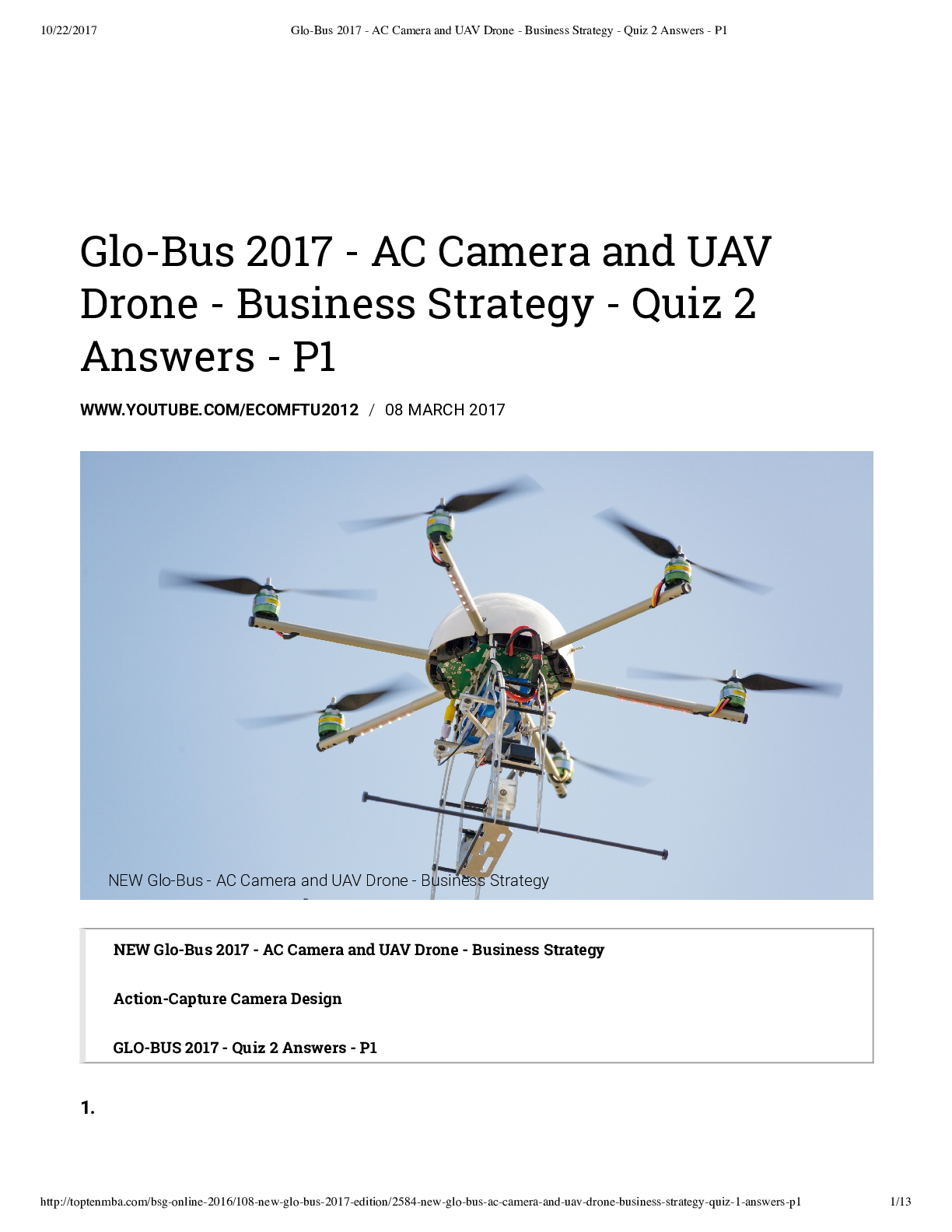
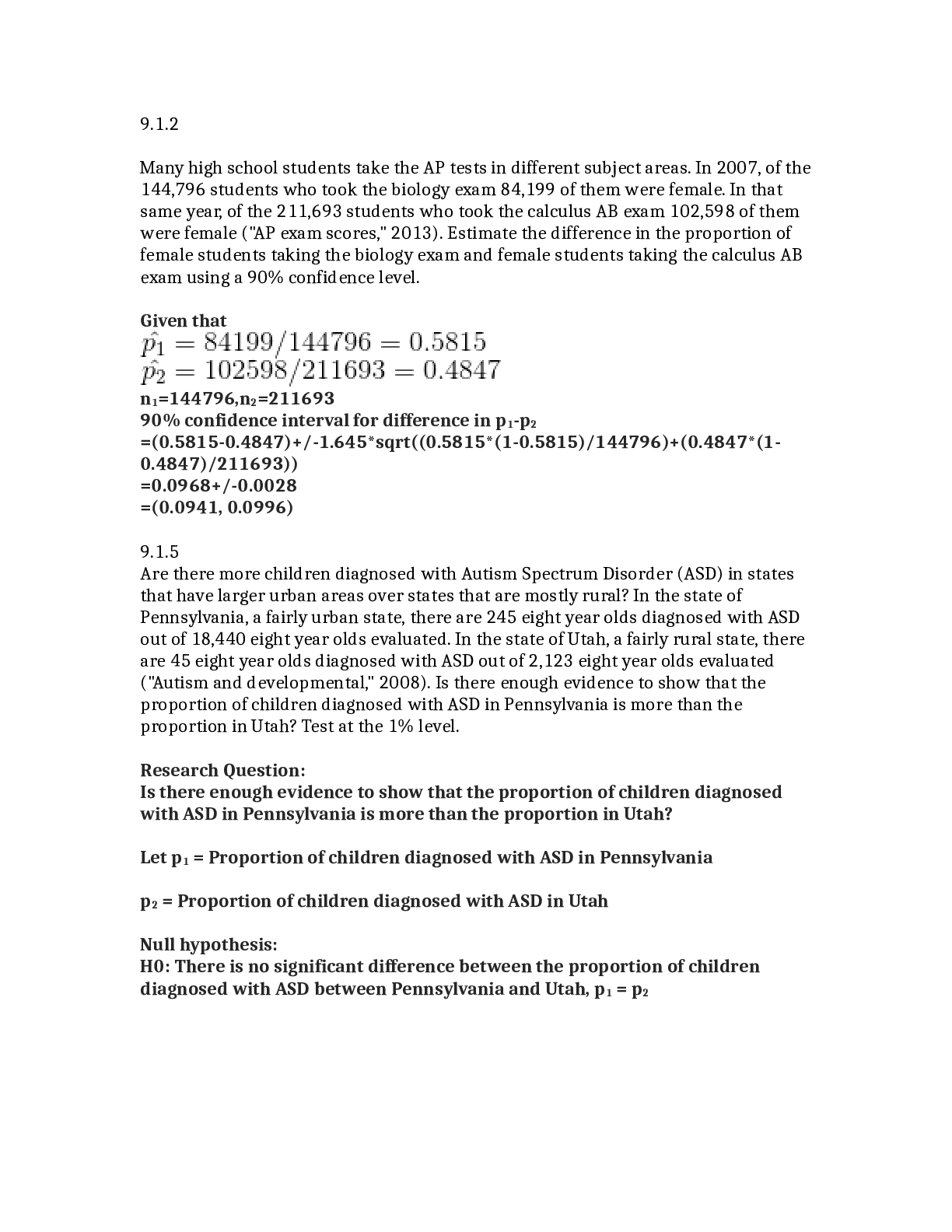
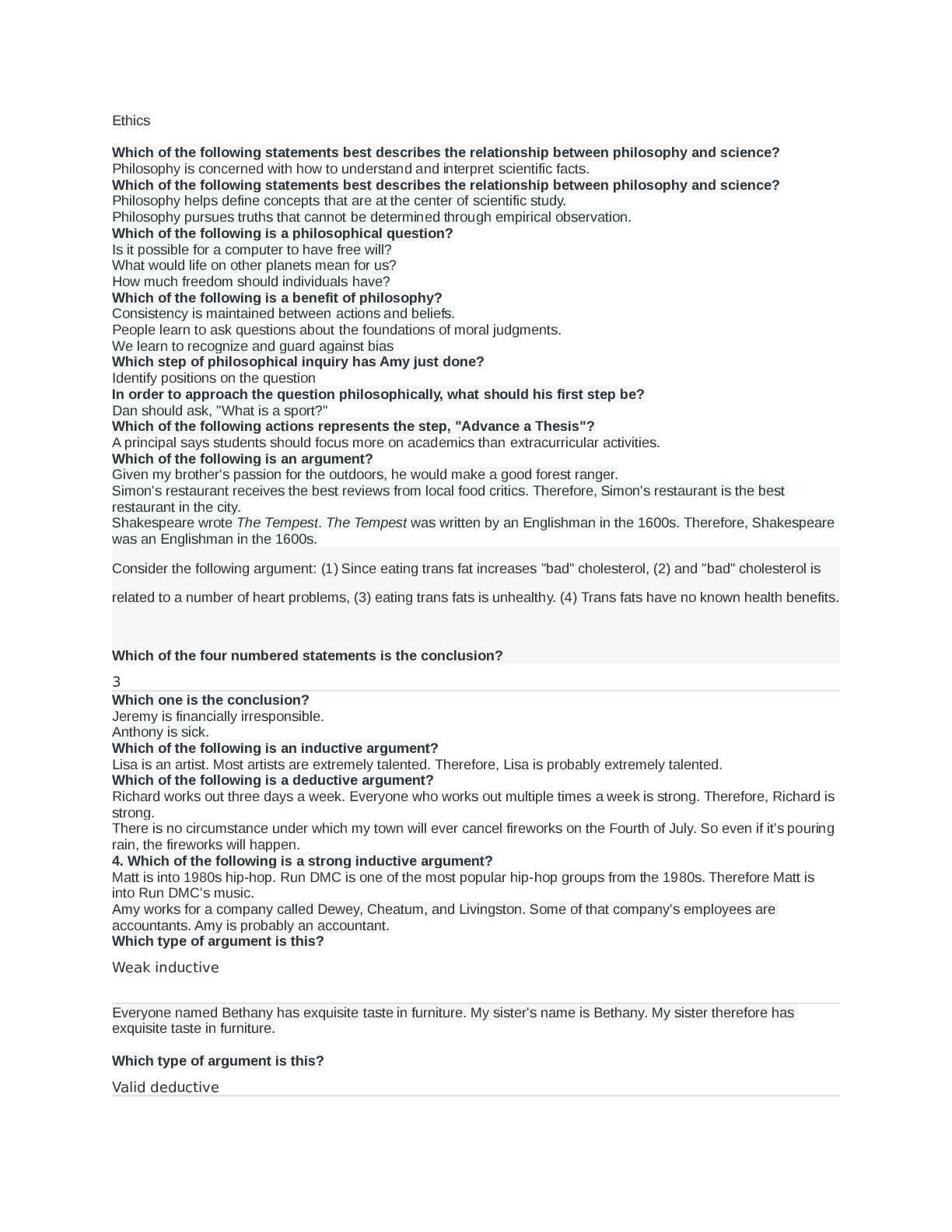

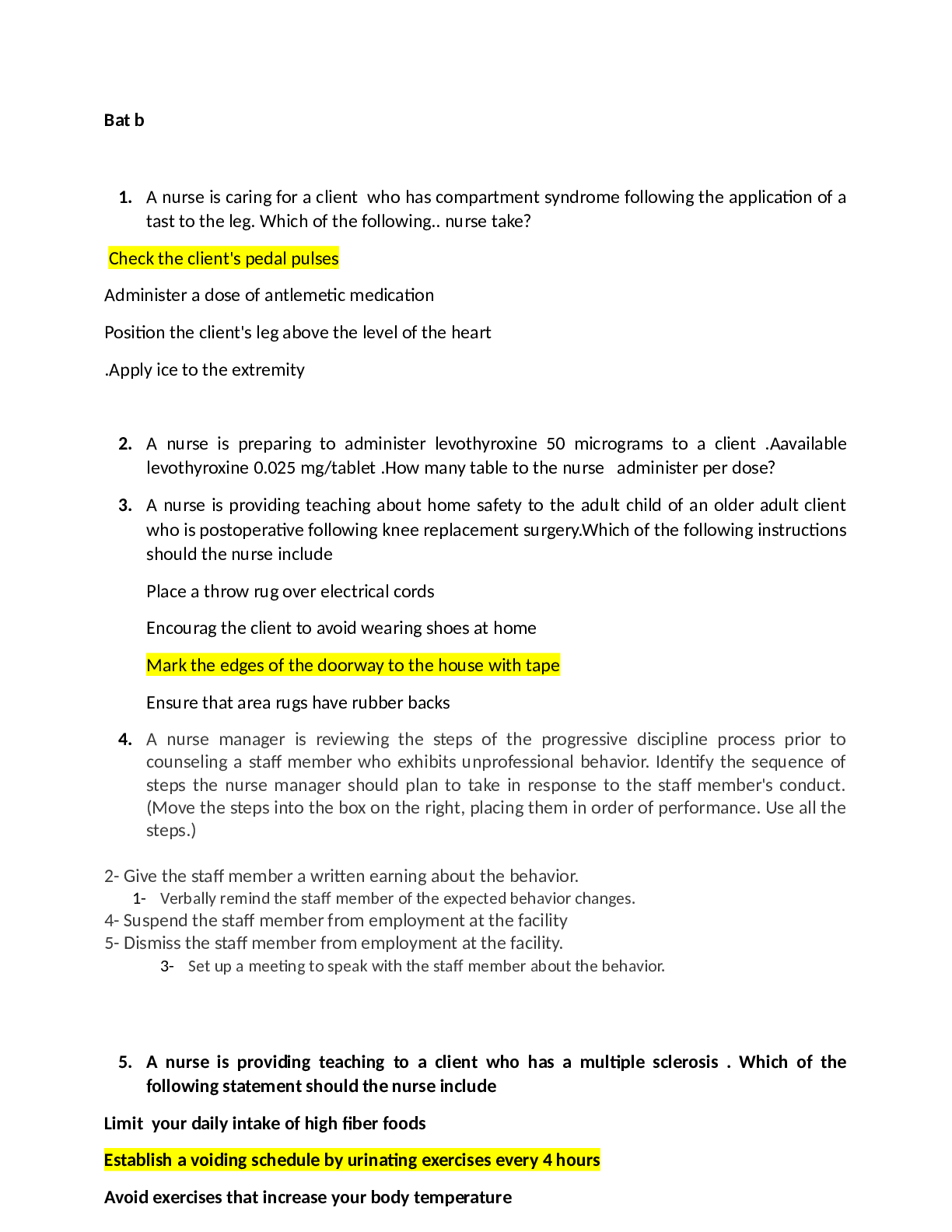

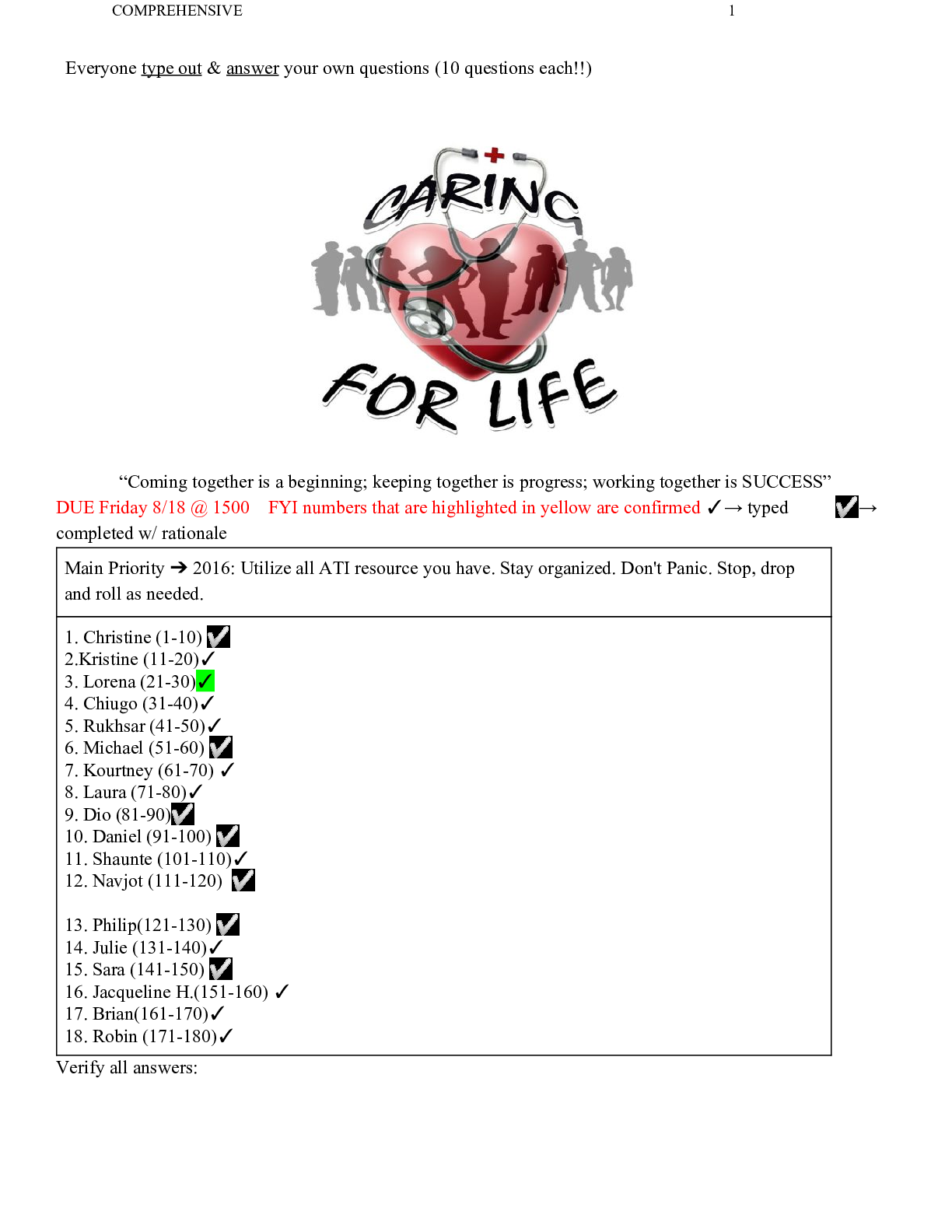
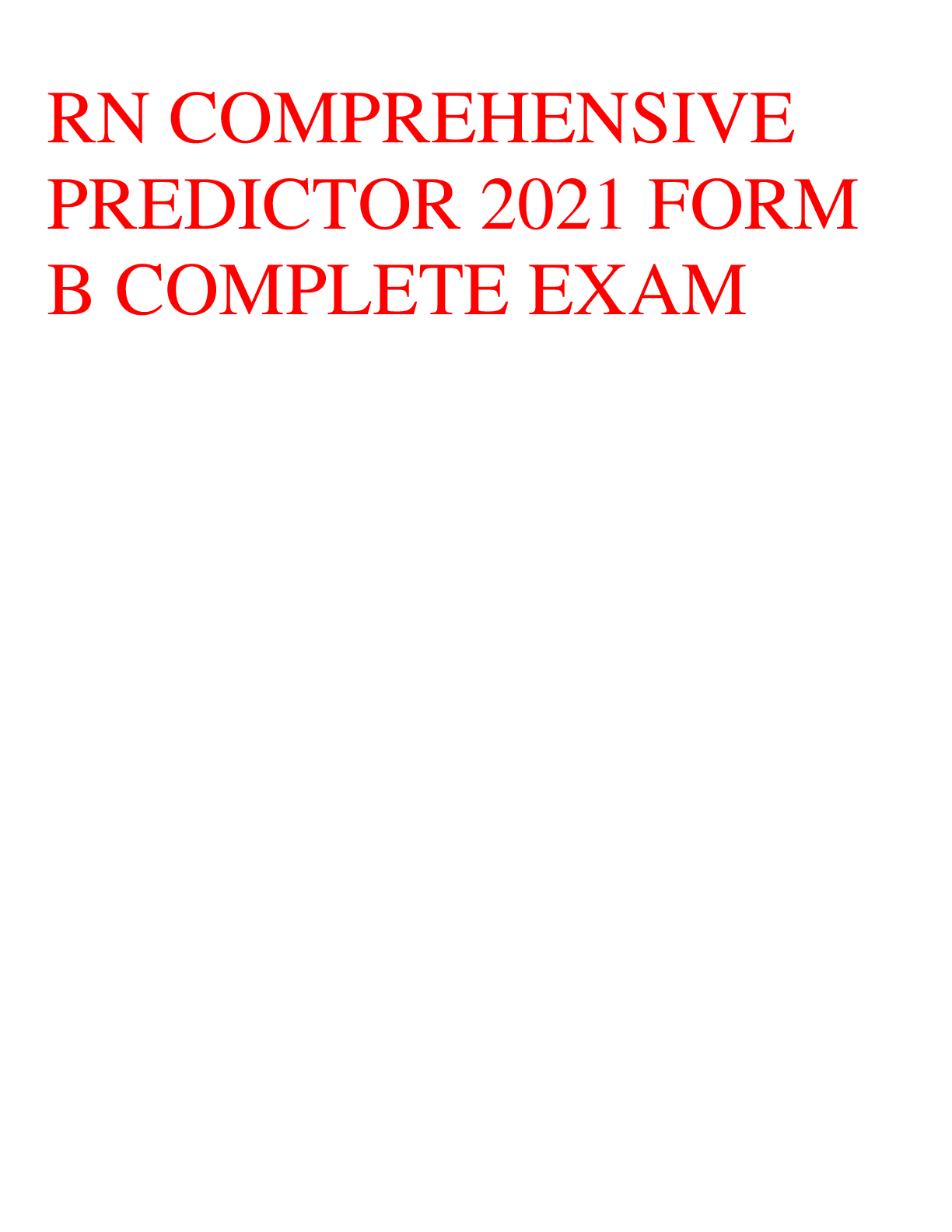

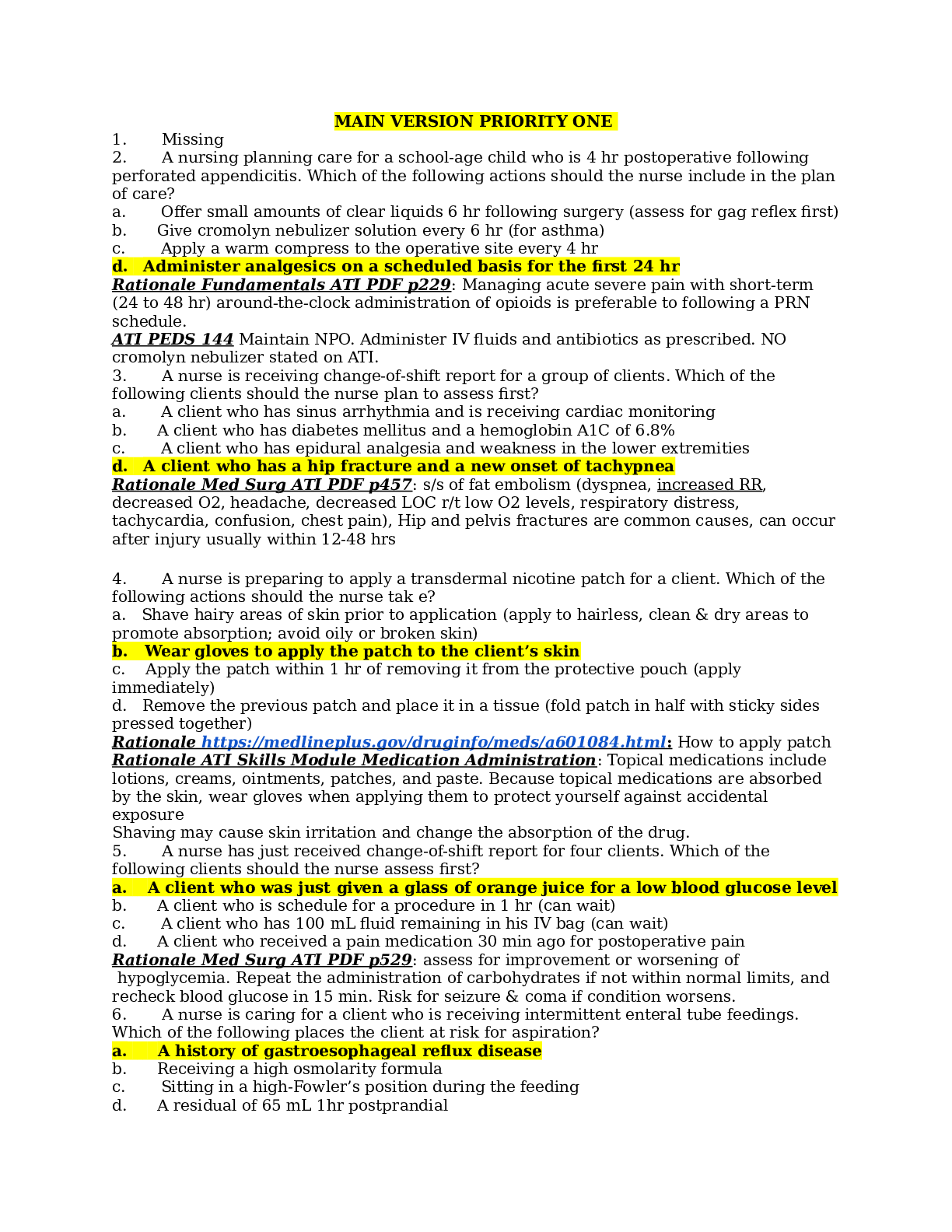
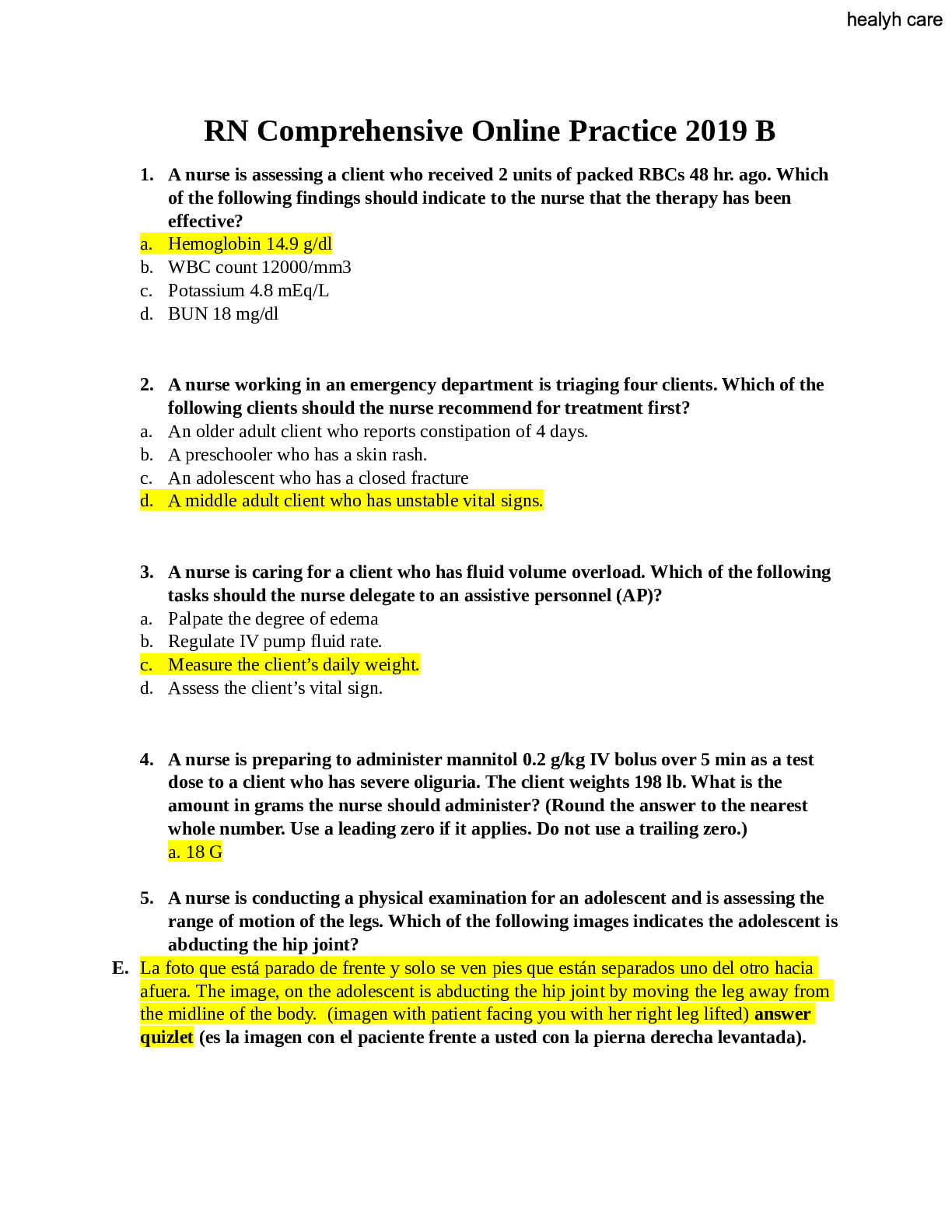
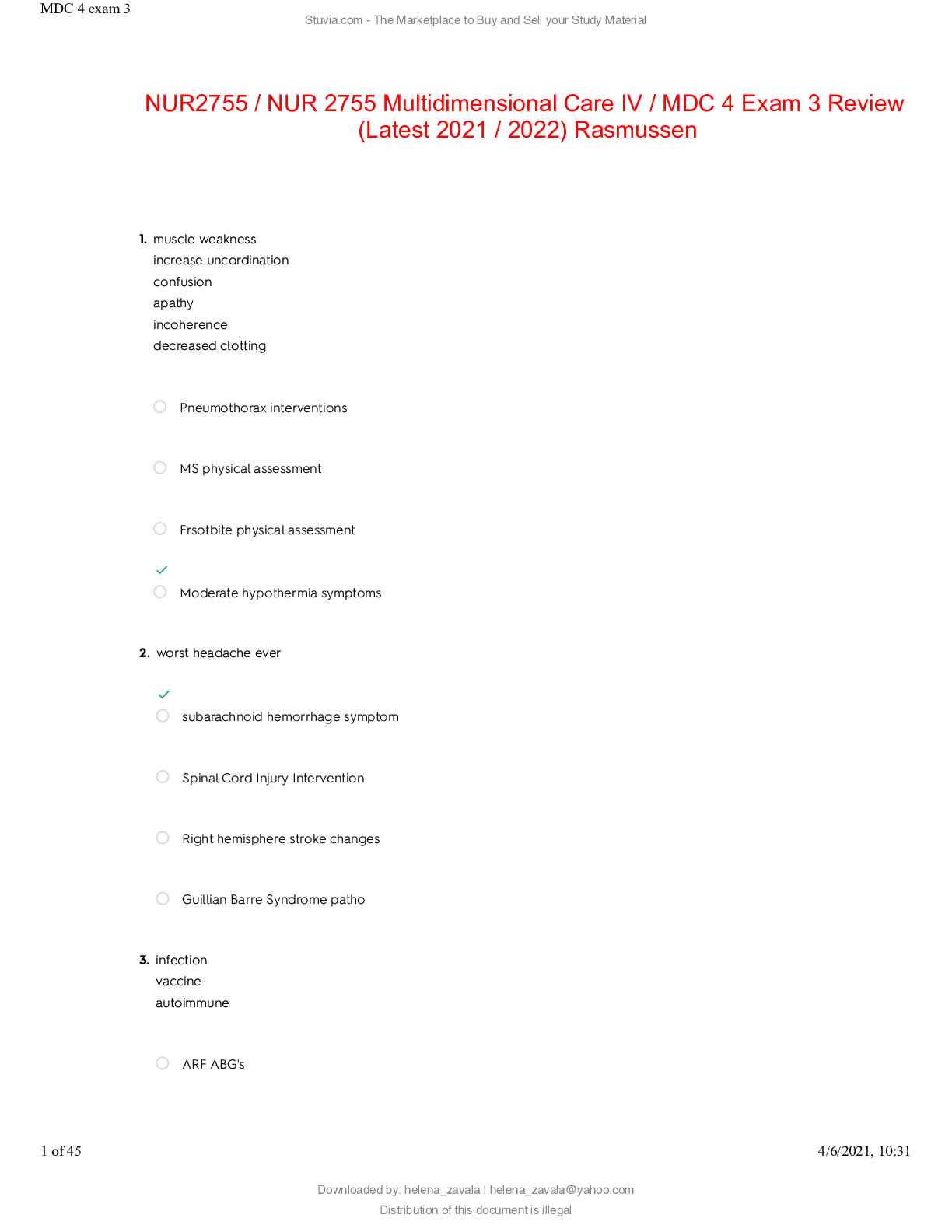


.png)


.png)


.png)


.png)
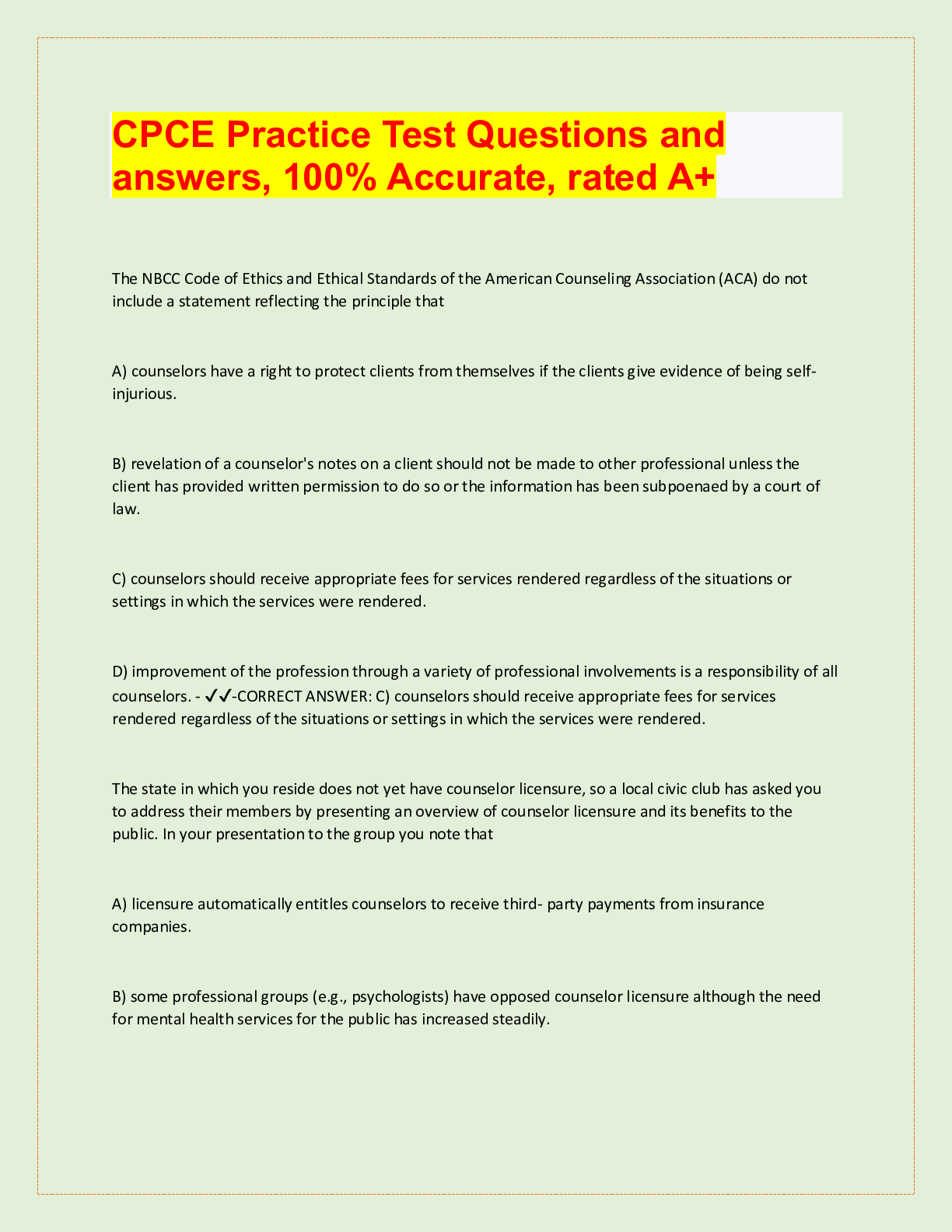
.png)
.png)
.png)

